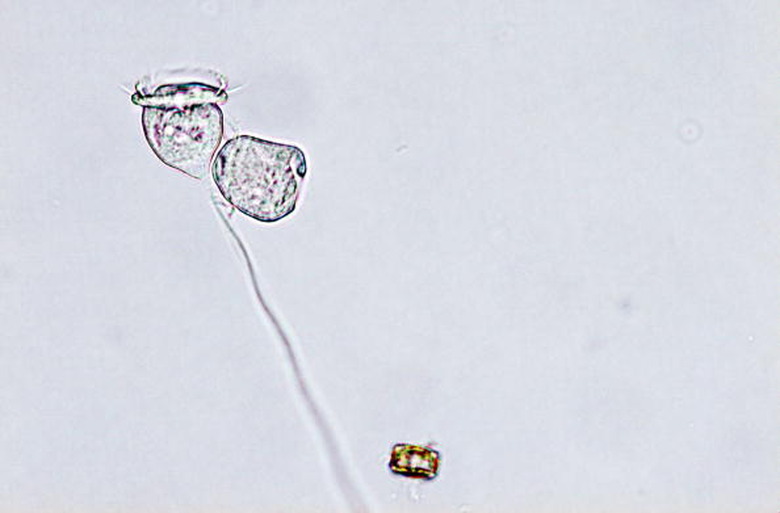Cell Models For Science Projects
Animal and plant cells consist of a number of interrelated structures, which work together to facilitate healthy cell growth and division. Students tend to learn science best when they conduct it in a hands-on way, so assign your students cell model projects to help them memorize key aspects of cell structure and learn the differences between animal and plant cell structure.
Animal Cell Structure
Animal Cell Structure
Animal cells contain a standard set of organelles, or cellular organs. Animal cells have a nucleus, containing chromosomes consisting of DNA, which controls many functions of a cell by creating proteins. Mitochondria are membrane-enclosed organelles, scattered throughout the cytoplasm, that convert the potential energy of food molecules into ATP. Ribosomes, organelles scattered throughout the cytoplasm, consist of ribonucleic acid (RNA) and are responsible for synthesizing proteins. The endoplasmic reticulum (ER), consisting of both rough ER and smooth ER, accounts for half the total membrane in eukaryotic cells. The rough ER, covered with ribosomes, synthesizes proteins, whereas the smooth ER, which is ribosome-free, synthesizes lipids and metabolizes carbohydrates. The Golgi apparatus processes proteins synthesized in the cell. Finally, lysosomes are responsible for waste disposal, and vacuoles are responsible for storing food materials and sequestering toxic substances.
Animal Cell Modeling
Animal Cell Modeling
Create a 3D animal cell using Jell-O. Mix Jell-O with warm water and pour it into a plastic bag, which represents the animal cell membrane. Before the Jell-O hardens, add fruits and pieces of food to represent the organelles. For instance, you could designate a plum as the nucleus, lasagna as the endoplasmic reticulum, small pieces of cardboard in oval shapes as Golgi bodies, small buttons as vacuoles, pepper particles as ribosomes and mandarin oranges as mitochondria. Close the plastic bag and refrigerate until the Jell-O firms up.
Plant Cell Structure
Plant Cell Structure
Plant cells contain all of the structures in animal cells above, plus a few structures unique to plant cells. In addition to a cell membrane, plant cells have thin, rigid cell walls, consisting of cellulose fiber, which maintains internal cell pressure. Green-colored chlorophyll molecules in plant cells, contained within disc-shaped chloroplast organelles, produce sugar and energy, using light, carbon dioxide and water.
Plant Cell Model
Plant Cell Model
You can construct a plant cell model either by adding additional components to the animal cell model from Section 2 (i.e., add cardboard to represent the cell wall and grapes to represent chloroplasts). Alternatively, you can construct a non-nutritional model using materials you have around your home. For instance, you can structure your model around a shoe box, using the shoe box as your cell wall, covering the sides with cotton balls to represent the cell membrane, spreading yellow clay all over the cotton balls to represent the cytoplasm and adding dabs of green clay to represent chloroplasts. Make a bunch of cotton balls into a big cotton ball and paint it blue to represent the nucleus. Paint a smaller amount of carbon pink, designating the mitochondria, and color a cotton roll purple to designate vacuoles.
Cite This Article
MLA
Lobo, Tricia. "Cell Models For Science Projects" sciencing.com, https://www.sciencing.com/cell-models-science-projects-7966645/. 24 April 2017.
APA
Lobo, Tricia. (2017, April 24). Cell Models For Science Projects. sciencing.com. Retrieved from https://www.sciencing.com/cell-models-science-projects-7966645/
Chicago
Lobo, Tricia. Cell Models For Science Projects last modified August 30, 2022. https://www.sciencing.com/cell-models-science-projects-7966645/
